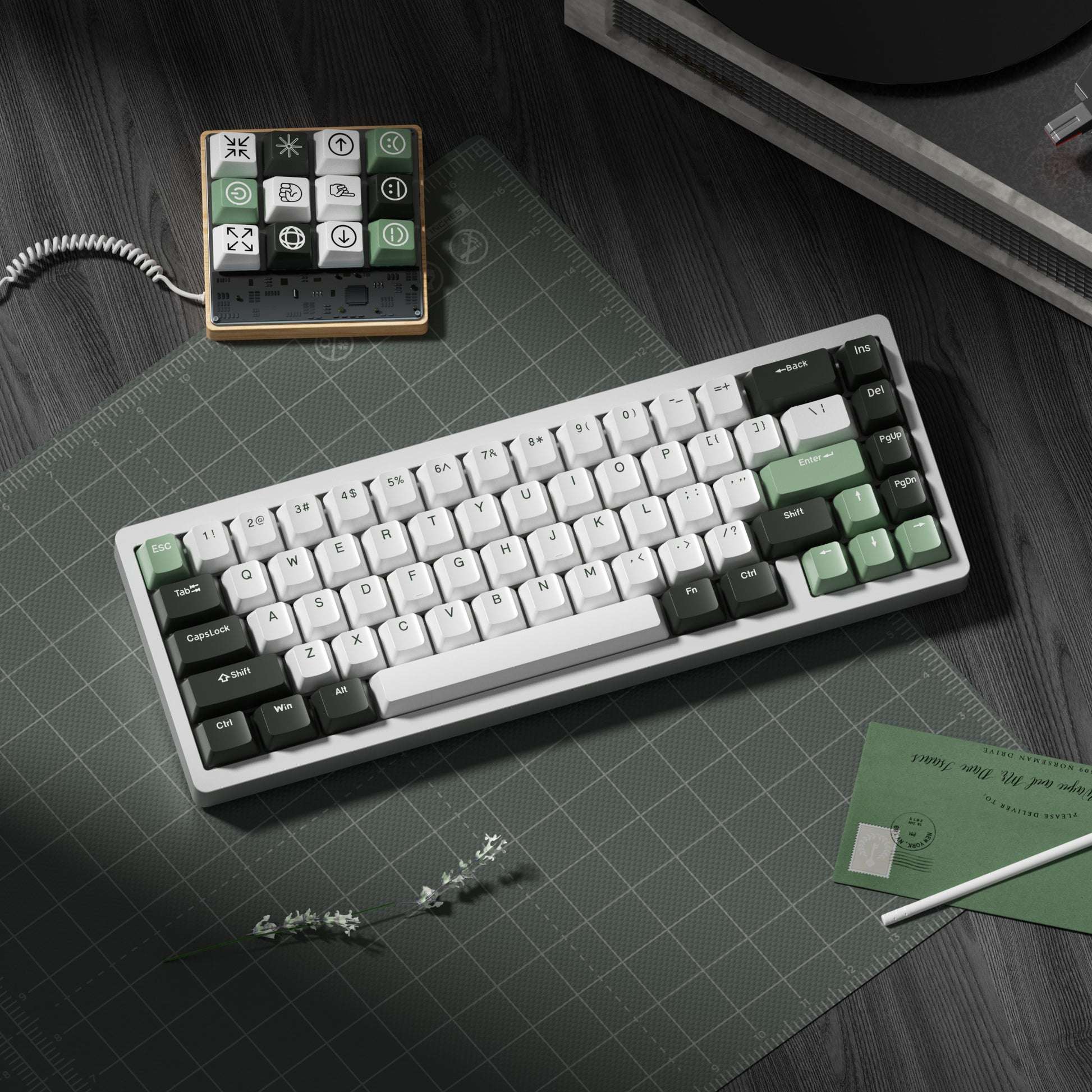In the world of mechanical keyboards, there’s a fascinating array of layouts catering to different preferences and needs. Among these, the 65% keyboard layout has gained substantial popularity, especially among enthusiasts seeking a balance between compactness and functionality. But what exactly is a 65% keyboard layout, and why might you consider it for your next keyboard?
Understanding the 65% Keyboard Layout
A 65% keyboard layout is a compact form factor that typically includes around 65-68 keys. This layout strikes a balance between the ultra-compact 60% layout and the more feature-rich TKL (Tenkeyless) or full-sized keyboards. Here’s a breakdown of what sets a 65% keyboard apart:
Key Features:
- Compact Size: The 65% layout omits the numeric keypad found on full-sized and TKL keyboards. It also excludes the function row (F1-F12) found on TKL keyboards but retains the arrow keys and a cluster of navigation keys (like Home, End, Page Up, and Page Down).
- Arrow Keys: One of the significant advantages over the 60% layout is the inclusion of dedicated arrow keys. This is a crucial feature for many users who rely heavily on these keys for navigation, whether for coding, writing, or gaming.
- Function Layer: To compensate for the missing keys, 65% keyboards use a function layer, allowing users to access additional functions by holding down a function key (often labeled as "Fn") and pressing another key. This layer typically includes media controls, function row access, and other shortcuts.
Layout Comparison:
- 60% Keyboard: Smaller than the 65%, lacking dedicated arrow keys and navigation keys.
- 65% Keyboard: Adds arrow keys and some navigation keys without increasing size dramatically.
- TKL (Tenkeyless) Keyboard: Larger, with function row and more navigation keys but no numeric keypad.
- Full-Sized Keyboard: Includes all keys, such as the numeric keypad, function row, and navigation keys, but is the largest in size.
Advantages of a 65% Keyboard Layout
1. Space Efficiency
The 65% layout is ideal for those who want to save desk space without sacrificing too much functionality. Its compact size allows for more mouse movement space, which can be especially beneficial for gamers or those with limited desk real estate.
2. Portability
Due to its smaller size, a 65% keyboard is easier to transport. This makes it a great choice for those who need a reliable keyboard on the go, whether moving between workspaces or attending gaming tournaments.
3. Aesthetic Appeal
Many users find the 65% layout visually appealing. Its minimalistic design can declutter your workspace, and there are numerous customization options available, from keycaps to cases, allowing for a personalized touch.
4. Functionality
While it trims down the size, a 65% keyboard retains critical keys that enhance productivity. The dedicated arrow keys and navigation cluster make it more user-friendly compared to a 60% keyboard, especially for tasks involving extensive text editing or navigation.
Disadvantages of a 65% Keyboard Layout
1. Learning Curve
Switching to a 65% keyboard might involve a learning curve, particularly if you are used to a full-sized or TKL keyboard. The function layer can take time to get accustomed to, especially for accessing the function row.
2. Limited Keys
Despite its balance, the 65% layout still lacks some keys present in larger keyboards. If you frequently use the numeric keypad or prefer having dedicated function keys, you might find this layout less convenient.
Is a 65% Keyboard Right for You?
Choosing the right keyboard layout depends on your specific needs and preferences. If you value a compact, portable keyboard that doesn’t compromise on essential keys like the arrow keys and navigation cluster, the 65% layout might be perfect for you. It offers a harmonious blend of functionality and space-saving design, making it a favorite among many keyboard enthusiasts and professionals alike.
Whether you're a gamer, coder, writer, or someone who appreciates a minimalist workspace, the 65% keyboard layout provides a versatile and aesthetically pleasing option. As with any keyboard, consider your use case and personal preferences to determine if this layout fits your needs. Happy typing!






